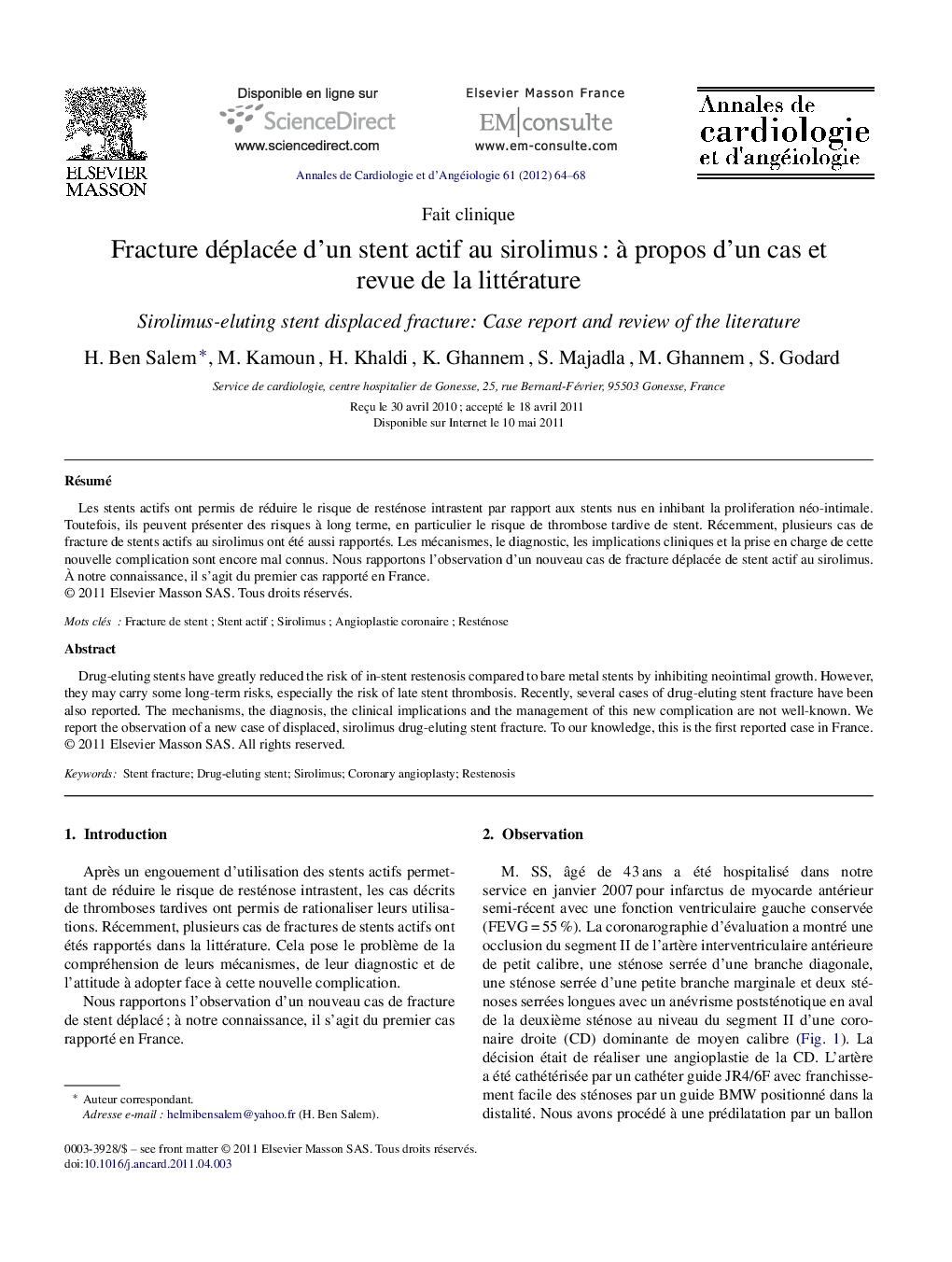| Article ID | Journal | Published Year | Pages | File Type |
|---|---|---|---|---|
| 2868998 | Annales de Cardiologie et d'Angéiologie | 2012 | 5 Pages |
RésuméLes stents actifs ont permis de réduire le risque de resténose intrastent par rapport aux stents nus en inhibant la proliferation néo-intimale. Toutefois, ils peuvent présenter des risques à long terme, en particulier le risque de thrombose tardive de stent. Récemment, plusieurs cas de fracture de stents actifs au sirolimus ont été aussi rapportés. Les mécanismes, le diagnostic, les implications cliniques et la prise en charge de cette nouvelle complication sont encore mal connus. Nous rapportons l’observation d’un nouveau cas de fracture déplacée de stent actif au sirolimus. À notre connaissance, il s’agit du premier cas rapporté en France.
Drug-eluting stents have greatly reduced the risk of in-stent restenosis compared to bare metal stents by inhibiting neointimal growth. However, they may carry some long-term risks, especially the risk of late stent thrombosis. Recently, several cases of drug-eluting stent fracture have been also reported. The mechanisms, the diagnosis, the clinical implications and the management of this new complication are not well-known. We report the observation of a new case of displaced, sirolimus drug-eluting stent fracture. To our knowledge, this is the first reported case in France.
